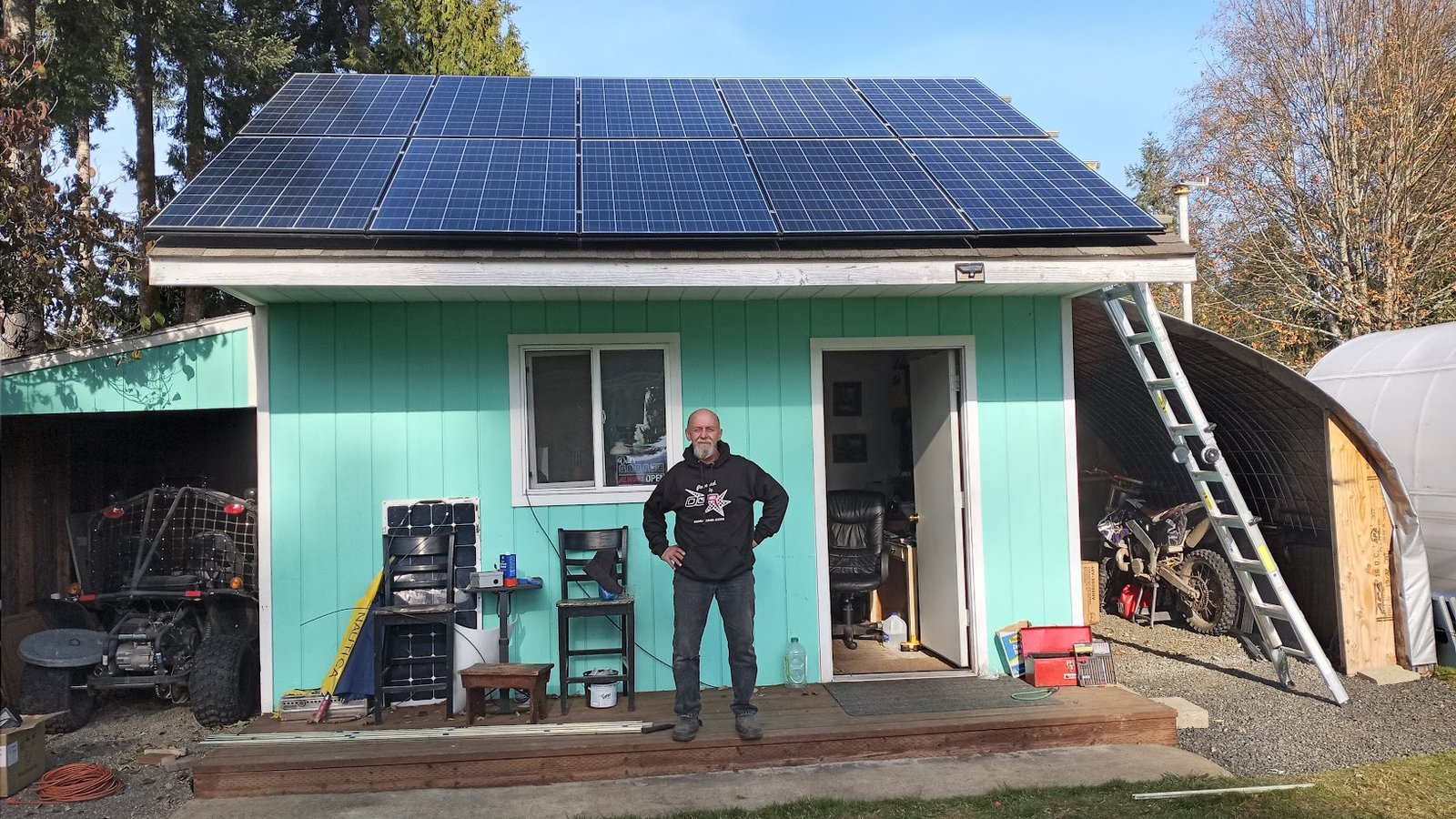Installing a solar power system involves several key components and parts that work together to generate, convert, store, and manage electricity from solar energy.
Here’s a comprehensive list:
Solar Panels
- Photovoltaic (PV) Panels: The primary component that converts sunlight into electricity.
- Mounting System: Includes brackets, rails, and hardware to secure panels to the roof or ground.
Inverters
- Inverter: Converts the DC electricity generated by the solar panels into AC electricity used by most home appliances.
- String Inverter
- Microinverter
- Hybrid Inverter: If integrating with battery storage.
Battery Storage (optional)
- Solar Battery: Stores excess energy for use when the sun isn’t shining.
- Battery Management System (BMS): Manages charging and discharging of the battery.
Electrical Components
- Charge Controller: Regulates the voltage and current coming from the solar panels to the battery (necessary in off-grid systems).
- Combiner Box: Combines the output of multiple strings of solar panels into a single DC output.
- AC/DC Disconnect Switches: Allows for safe disconnection of the system for maintenance.
- Circuit Breakers: Protects the electrical circuits from overload or short circuits.
- Fuses: Additional overcurrent protection.
Wiring and Connectors
- Solar Cables: Specialized for outdoor use with UV and weather resistance.
- Connectors: Such as MC4 connectors for safe and secure electrical connections.
- Conduit: Protects electrical wires.
Monitoring and Control
- Monitoring System: Tracks the performance of the solar power system.
- Energy Meters
- Monitoring Software: Can be app-based for remote monitoring.
Additional Components
- Grounding Equipment: Ensures the system is safely grounded to prevent electrical shocks.
- Surge Protectors: Protects the system from electrical surges.
- Racking and Mounting System: Specific to roof type or ground-mounted systems.
- Flashing: Used to prevent leaks where mounts penetrate the roof.
Installation and Safety Equipment
- Roof Attachments: Specific to the type of roof (e.g., tile hooks, flashing).
- Safety Gear: Harnesses, helmets, and other personal protective equipment for installers.
- Labels and Signage: For compliance with electrical codes and safety standards.
- Tools: Including drills, wrenches, screwdrivers, and multimeters.
Permitting and Documentation
- Permits: Local government permits for installation.
- Design Plans: Detailed plans outlining the installation layout.
- Warranties: For panels, inverters, batteries, and other components.
Optional Enhancements
- Optimizers: Maximizes energy output from each panel, often used with string inverters.
- Backup Generator: Provides power during prolonged outages when battery storage is depleted.
- Smart Home Integration: Integrates the solar power system with home automation systems.
Summary
- Solar Panels and Mounting: PV panels, mounting system.
- Inverters: String, micro, or hybrid inverters.
- Battery Storage: Stores excess energy, BMS.
- Electrical Components: Charge controller, combiner box, disconnect switches, circuit breakers, fuses.
- Wiring and Connectors: Solar cables, connectors, conduit.
- Monitoring and Control: Monitoring system, energy meters, software.
- Additional Components: Grounding equipment, surge protectors, racking, flashing.
- Installation and Safety: Roof attachments, safety gear, tools, labels, signage.
- Permitting and Documentation: Permits, design plans, warranties.
- Optional Enhancements: Optimizers, backup generator, smart home integration.
Though this is list is labeled as comprehensive. It is incomplete .
Each part and component is essential for the efficient, safe, and compliant operation of a solar power system. Depending on specific needs and configurations, additional components may be required.

